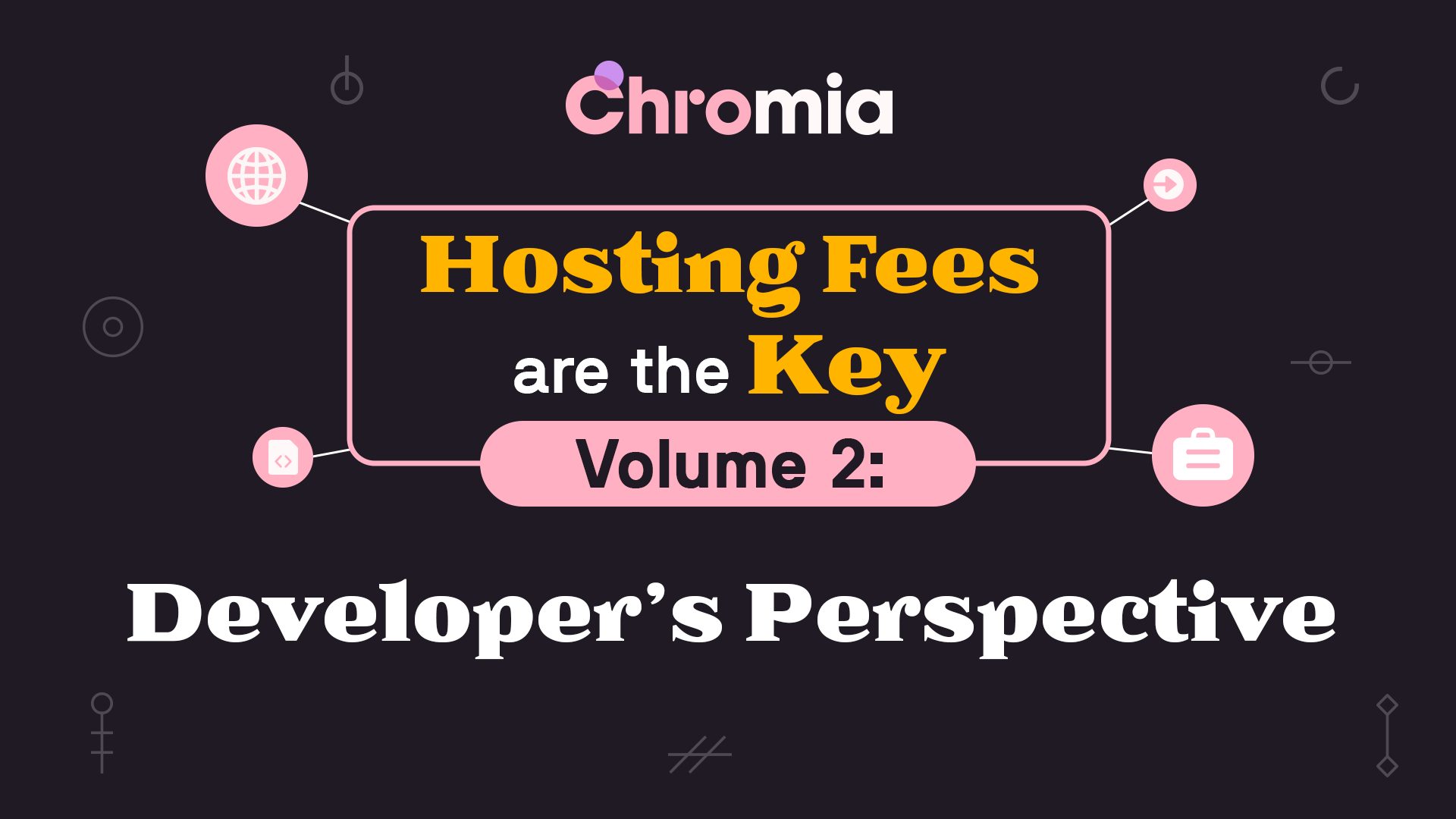This post is the second in a series of three articles discussing the advantages of Chromia’s hosting fee model. For additional information, refer to page 23 of the Chromia Whitepaper.
Welcome to the second installment of our three-part series on Chromia's innovative hosting fee model. In our previous article, we explored how this approach transforms the user experience of blockchain, making it more accessible and user-friendly. Now, let's shift our focus to a crucial question: "How can this help developers and entrepreneurs?".
At first glance, it may seem that launching something on Ethereum or another EVM chain is ‘easier’ for the developer. Once you deploy your contracts, it's up to the users to cover all the costs of interacting with the dapp.
However, depending on the blockchain and how busy the network is, the cost for deploying smart contracts or a series of smart contracts can get expensive - sometimes costing hundreds or even thousands of dollars. What’s more, when it's time to repair or upgrade something, deployment fees need to be paid all over again.
In addition, many projects working to deliver complex dapps need to pay other blockchain projects or centralized services like AWS for third party indexing, database hosting, file storage and more. Many, if not all, of these needs can be met on Chromia by leveraging relational blockchain, on-chain metadata and other utilities such as FileHub.
Chromia Works with the Traditional Model
A project can raise money with a token launch on Ethereum, use an ERC-20 version of their token for exchange listings, but run their entire dapp on Chromia as a Layer-2.
The project’s native token will be easily bridgeable back and forth between Ethereum and the project’s dapp chain on Chromia, allowing their users to use the native token inside the dapp, while also enjoying the convenience of fast and ‘free’ transactions.
If actions within the dapp generate revenue (i.e. trading fees, a cut of NFT sales, etc.), this revenue can in turn be used to pay hosting fees, creating a sustainable cycle. One of the strengths of this model is economic scalability. If a dapp has a modest user base, their hosting requirements and costs will be lower. However, if a Chromia dapp explodes in popularity it will generate more revenue, offsetting the increased cost of paying more providers and running more clusters simultaneously.
Hosting fees also allow for blockchain games to use models normally reserved for Web2. For example, a project can offer a ‘Freemium’ model where users can play the basic game for free, then use native tokens or other digital currencies to purchase skins, upgrades, add-on content, etc. Revenue generated from these sales can then be used to pay for hosting.
Blockchain as a Value Added Service
We see an untapped market for companies to offer blockchain powered services as an addition to their core offerings. For example, a fashion company could offer ‘digital twin’ NFTs or create a blockchain based tracking system for their products.
In a system where the end user needs to pay for transactions, adding these services come with potential blockers:
- Anyone who wants to claim an NFT needs the blockchain’s native token for gas fees to initiate the transaction.
- Anyone who wants to register their product and add to an item’s blockchain based record needs the blockchain’s native token for gas fees to write to the blockchain.
In a situation like this, the company offering the added services pays the hosting fees for their dapp and factors the cost into their operating budget and product pricing. As a result, customers are given a far more streamlined experience that makes it easier for them to interact with Web3.
Tokenless Dapps
Under the hosting fee model, we also see the potential for dapps to emerge that deliberately forego the creation of a token at all. While token sales can serve as initial funding sources, they also introduce a host of complexities and challenges. These include designing intricate tokenomics, navigating cryptocurrency exchanges for a smooth launch and managing investor sentiment amidst crypto market volatility.
Chromia offers an alternative path. Dapps developed on Chromia can harness the power of mainstream crypto assets like wrapped Ethereum, Bitcoin, or stablecoins. If a dapp proves itself to be engaging and revenue-generating, it can easily cover its CHR hosting fees, resulting in a net profit for its developers. This approach allows developers to concentrate on creating dapps that are as useful or enjoyable as possible, without the additional burdens of token sales, exchange listings, and investor sentiment.
Examples such as OpenSea have demonstrated that a dapp can become popular without having a native token. However, during peak periods of crypto interest, users are burdened with rising gas fees and slower transactions.
Herein lies the strength of the hosting fee model. As popularity surges, so does revenue, enabling dapps to comfortably accommodate increased hosting fees while maintaining a seamless user experience. This model ensures that user satisfaction remains intact, even during periods of heightened activity.
Exploring the Possibilities
Check out the third and final article in the series next week, where we imagine some dapps…
About Chromia
Modern society runs on data and every online service you’re using is built upon underlying databases - ranging from your online bank to music streaming and gaming. Chromia is a relational blockchain - a combination of a relational database and a blockchain - making it easy to develop user-friendly decentralized apps for almost any industry, including DeFi, NFTs, gaming, and more.
Website | Twitter | Telegram | Facebook | Instagram | Youtube | Discord
